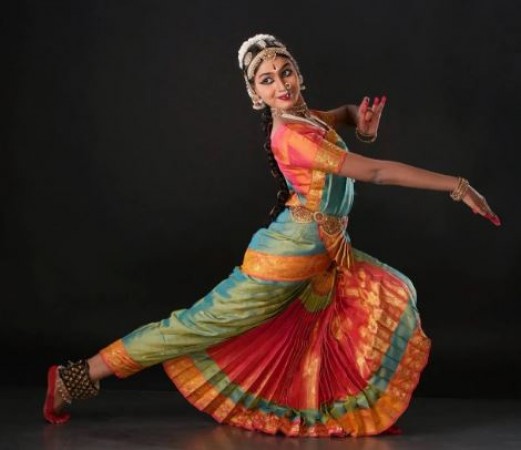
Dance or Nadagam forms an integral part of the culture of Tamil Nadu, with its origin stemming from the ancient dance-drama form called Therukoothu. Traditional folk dances of Tamil Nadu include several individual and group forms, some of which are now being practiced not only for their heritage but also for their entertainment quotient.
Kummi Dance
It is one of the most important and ancient forms of village dances. It reflects the day-to-day life of villagers of Tamil Nadu. Kummi dance originated during a period when there were no musical instruments. The term Kummi is said to be derived from the word 'Kommai' which means to 'dance with clapping of hands' to time. Kummi is usually performed by a group of Tamil women in a circle. This folk dance however assumes different forms. In some places, it is very simple, with rhythmic clapping while in other places the group of dancers imitates various harvesting activities. It is performed at all religious ceremonies, family functions, and harvest festivals like Pongal.
Also Read:Vibrant and Energetic: Bihar Celebrates its Rich Cultural Heritage with Traditional Folk Dance
Bharatnatyam Dance
It is the Tamil Nadu’s folk dance which is mainly performed by women. It is considered to be India’s oldest dance form and also the mother of all other styles of classical dance. The word comprises Bhava, Raag, Tala, Natya, which when put together makes Bharatanatyam. This culturally rooted dance form originated from the Tanjore district of Tamil Nadu and was firstly performed in the Hindu temples to worship Lord Shiva. This form focuses on hand gestures, footwork and facial expressions. As this dance mainly involves female dancers, their attire resembles Tamil bridal dress. A beautiful sari is worn by them which have a sparkling golden border. Along with this, jewellery is also worn by them which make their look exquisite.
Also Read:Folk Dance of France: Vibrant Rhythms and Elegance
Koothu Dance
It is a street party in which music and dance are performed by people during festivals and weddings. It is conducted at a meeting point of three to four streets in an open ground. Usually, men take part in it and the roles of women are also done by them. The function includes story-telling, singing, dancing, drama etc. Dress and makeup are special features. The function begins in the late evening and ends late in the night.
Also Read:Indian Folk Music: A Melodic Tapestry of Tradition and Culture
Kolattam or Kazhi Aattam
It is derived from “Kol” which means stick. During the dance, these Kols are struck together and rhythmic movements are done. This dance is a combination of songs, music and rhythmic movements. It is believed that there was a demon named Basavasura who was uncontrolled because of his evil powers. Once, a group of girls decided to play Kolattam with this demon. He was so pleased with the music and girls that he decided to give up all his evil. This is performed in a group during festivals and weddings.
Also Read:Spain's Enchanting Folk Art: A Mosaic of Cultural Heritage
Devaraattam Dance
This form of dance was presented to the Tamil kings and their army after their victorious return from the battle. The dancers hold a handkerchief in their hand and swing it and also copy the steps done by the leading person. The person leading the line wears a counterfeit beard and mask. Presently, this dance form does not have any lyrical music or song, it is only danced on the beats of Urumi Melam, Thappu Melam and Flute. This dance is now performed during festivals and social occasions.
Also Read:Exploring the Enigmatic Amazon River: A Journey Through Nature's Wonderland
Kavadi Aattam Dance
It is a dance form performed by men. This dance involves carrying Kavadi (burdens) through the pilgrimage. There are various types of Kavadi, the most common being a pot of milk. Some men may even pierce their cheeks and tongue with vel skewers. Some Kavadi are very elaborate and heavy. This dance form is performed in worship of Lord Murugan.
Also Read:Swan Markers: Exploring the Cultural Significance of Swans in Various Countries
The Isle of Man: A Gem in the Irish Sea with Timeless Legends and Natural Beauty